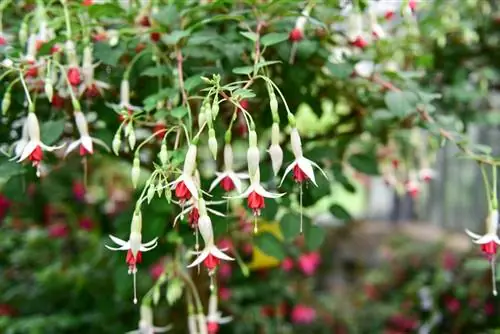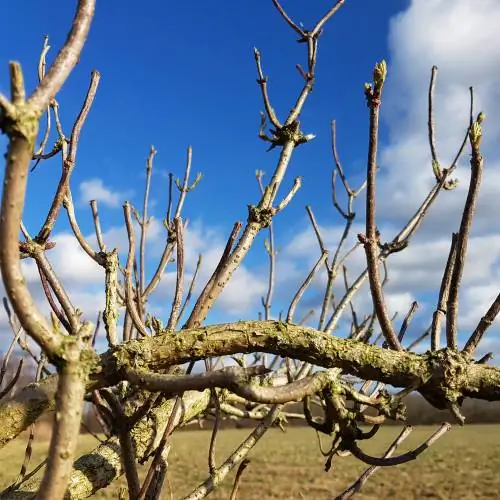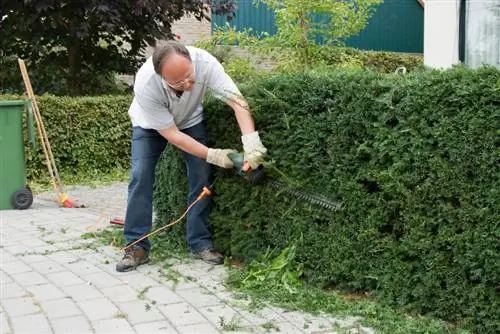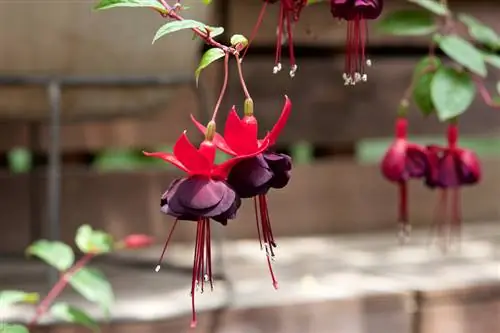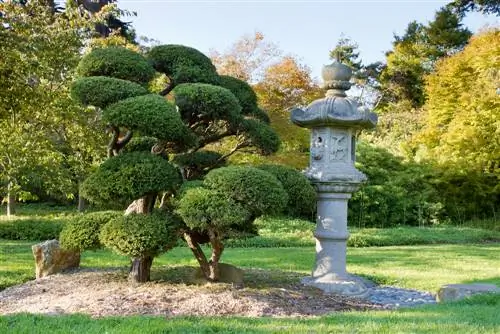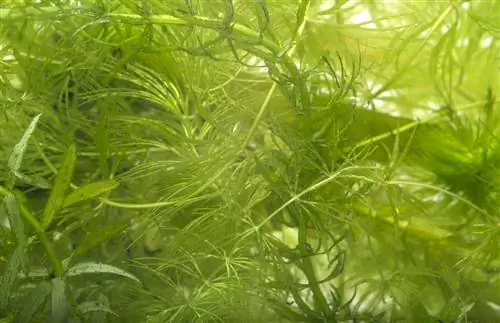- Author admin [email protected].
- Public 2023-12-16 16:46.
- Last modified 2025-01-23 11:20.
In their natural habitat, fuchsias grow in the nutrient-rich, humus-rich and moist soils of their rainforest home in the Peruvian Andes. The perennial plants can easily live to be 15 years or older, but they become woody over time. For this reason, regular pruning - ideally carried out annually - is essential.

How do I cut a fuchsia correctly?
Answer: Fuchsias should be pruned annually by removing about a third to half of the bush without cutting too far into the old wood. Leave at least 10 centimeters of wood standing and remove dead and sickly plant parts to promote flowering.
Prune fuchsia annually
Fuchsias only bloom on soft, annual shoots. However, since they become woody from autumn onwards and thus age, unpruned fuchsias become more and more lazy to bloom over the years. To prevent this, you should prune the plants once a year. In doing so, you remove about a third to half of the bush, but without cutting too far into the old wood. Leave at least 10 centimeters of wood standing! You should also remove dead and sickly parts of the plant immediately so that the fuchsia stays he althy and blooms diligently throughout the summer.
Pruning: Better before winter or in spring?
Whether you carry out the annual pruning in autumn or spring is up to you. However, there are some good reasons for an autumnal cut:
- pruned, hardy fuchsias are easier to overwinter
- pruned, non-hardy fuchsias take up less space in the winter quarters
- pruned fuchsias need less light in winter (less foliage=less light)
- Above-ground plant parts of hardy fuchsias freeze back anyway
- Dried plant parts are potential targets for pathogens
- Fungi etc. nest there more easily and weaken the plant
- You don't run the risk of missing the right time to prune in the spring
Training fuchsia standard stems
However, woodiness also offers the opportunity to train fuchsias not only into bushes, but also into standard stems or even bonsai. However, these growth forms require regular pruning over the years.
- Support the cutting of a standing fuchsia variety with a stick.
- Semi-trailing varieties can also be used for this purpose.
- Cut off all side shoots regularly.
- This causes the plant to grow faster and develop a stem.
- Once the fuchsia has reached the desired height, let the side shoots grow.
- However, avoid “wild growth” and instead form a crown through targeted cutting.
In terms of care, standard fuchsia trees or bonsai have the same requirements as naturally growing fuchsias.
Tip
Fuchsias are best known to us as bushy-growing plants or specially trained tall stems. What is less known is that there is also a fuchsia that grows as a tree, Fuchsia excorticata. This is native to New Zealand and is called “Kotukutuku” there.

